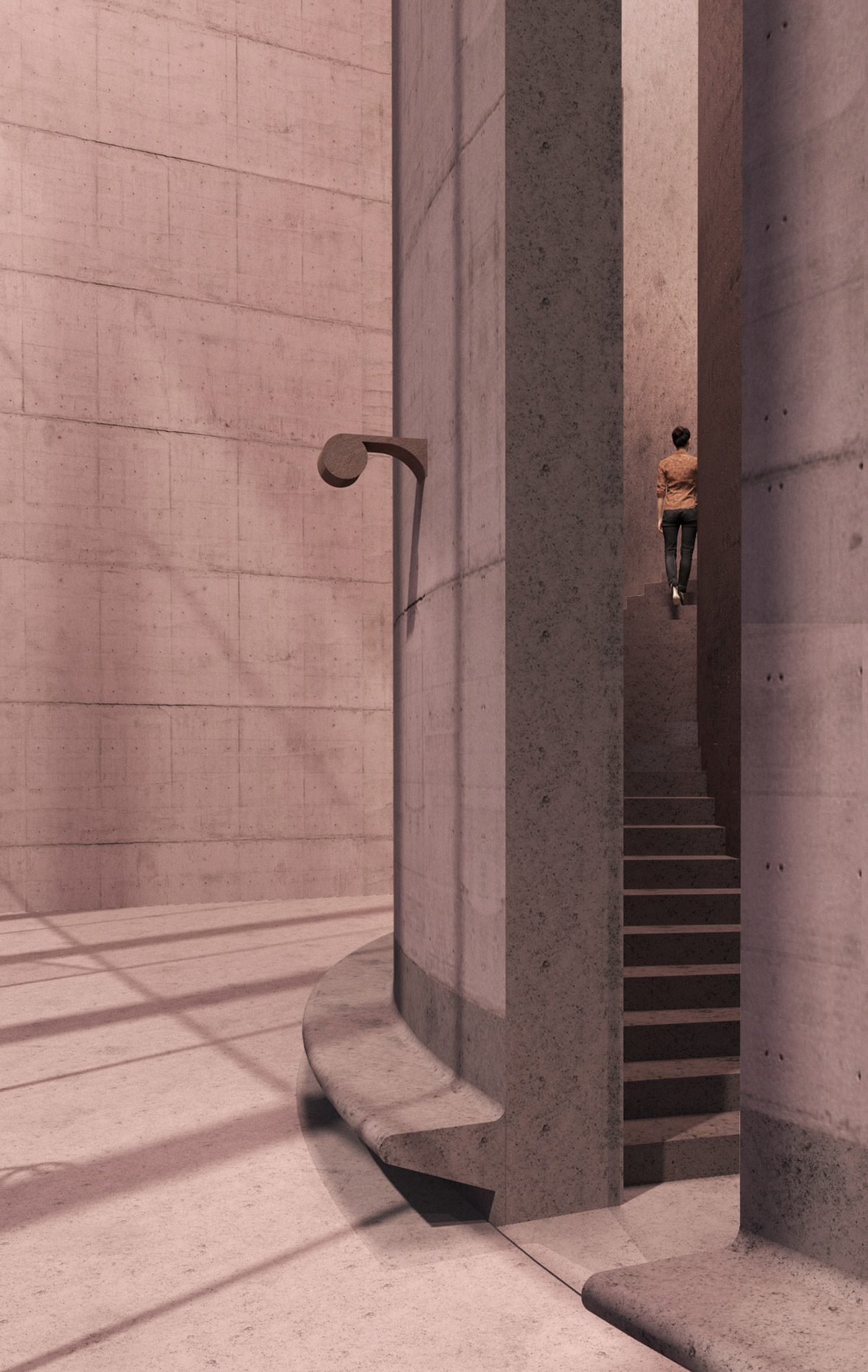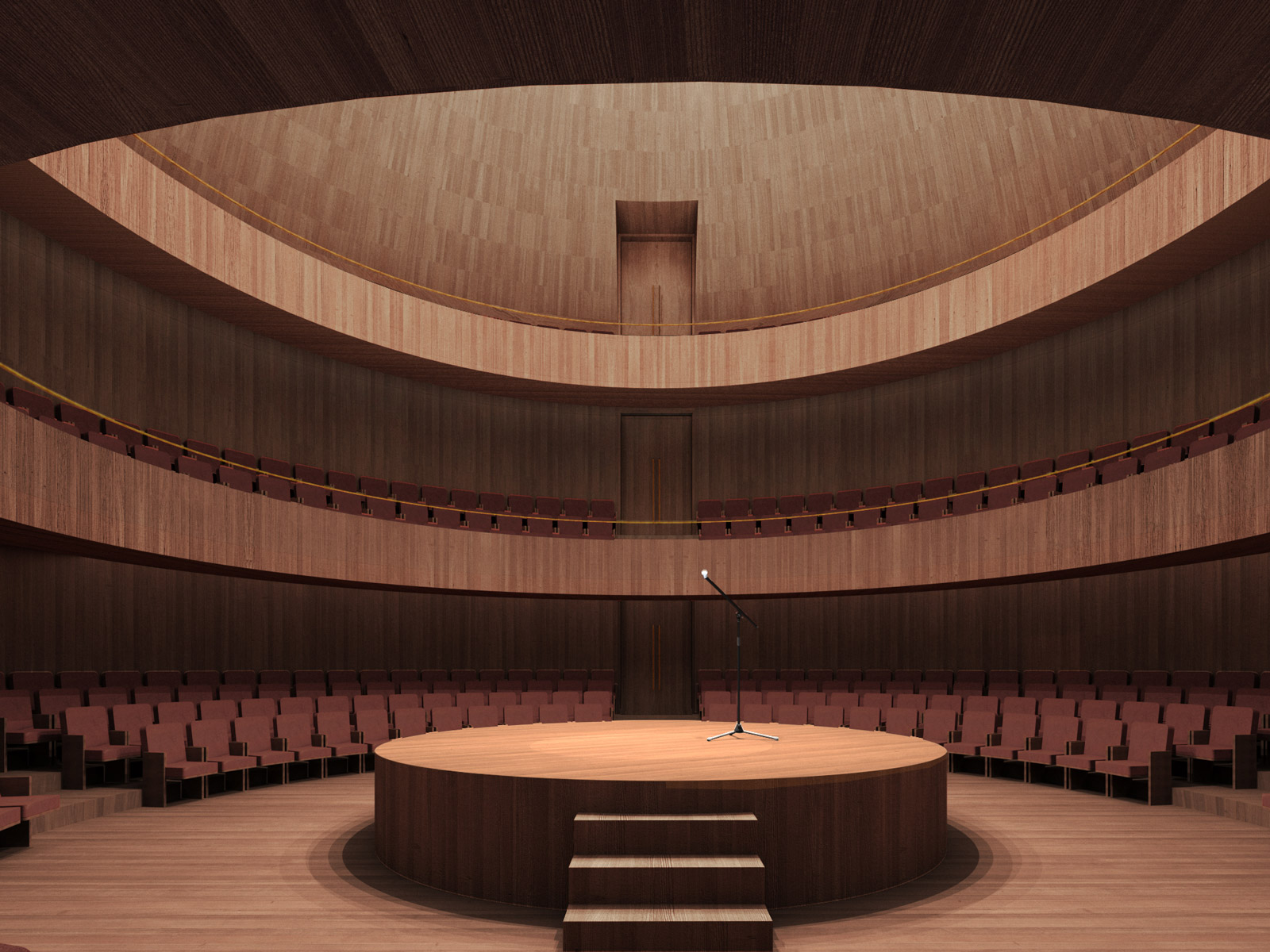19/029
Linda Hutchins
Architect and Visual Artist
Göteborg
19/029
Linda Hutchins
Architect / Visual Artist
Göteborg

«The beauty of natural light is that it is not static, which makes it a complex design tool yet a powerful creator of spatial experience.»
«The beauty of natural light is that it is not static, which makes it a complex design tool yet a powerful creator of spatial experience.»
«The beauty of natural light is that it is not static, which makes it a complex design tool yet a powerful creator of spatial experience.»
«The beauty of natural light is that it is not static, which makes it a complex design tool yet a powerful creator of spatial experience.»
Please, introduce yourself…
My name is Linda Hutchins and I visualize. I live and work in Göteborg, Sweden. In 2015 I graduated from Chalmers University of Technology and since then I have worked as an architect at a large firm (in both Stockholm and Göteborg) and as of the beginning of this year I joined a young firm here in Göteborg called KAKA Arkitekter.

Portrait Linda Hutchins
Portrait Linda Hutchins
Portrait Linda Hutchins
How did you find your way into the field of Architecture and Photography?
I have always loved photography. To be able to capture a moment in time, with its unique feel and setting, and preserve it in the form of an image is fascinating. My path to become an architect however was not straight. Design and construction have always been interests in my family, but to find my own way into it was difficult. After three years of Architecture School I was drained and thought that it wasn’t my thing. I sold most of my belongings and left for the US. It didn’t take me long to realize that I missed it, so after working as a photographer for awhile I gave architecture another chance and interned at a small firm for almost two years. Finally I decided to finish school and now I can’t think of a better occupation.
One thing that connects photography and architecture is my interest / obsession with light. Without it we perceive nothing and with it you can truly create magic. In a way I think this intangible phenomena indirectly led me into both these fields. With the right lighting both an image and a piece of architecture can come alive.
What comes to your mind, when you think about your diploma project?
As part of my master studies I did an exchange term at the MFA Lighting Design program at Parsons The New School for Design in New York to broaden my knowledge of lighting within the field of architecture. Later, back at Chalmers, when the time came to do my diploma project the abstract was a given - to investigate the impact of natural lighting in a residential context and how to utilize it as a tool in an architectural design process. My professor was Morten Lund and the project resulted in a investigation of passive architectural daylight methods and a design proposal of a "daylight-tuned" villa for my parents.
The beauty of natural light is that it is not static, which makes it a complex design tool yet a powerful creator of spatial experience. Light has now become a vital and exciting design tool that I practice as much as possible.
How did you experience the transition from University to the working world
An obvious and important part of the transition from university into the working world is the challenge of having to compromise with real world issues, such as tricky regulations and economy. In school you often get to set up your own rules and limitations, and the projects are many times meant to focus on the exploration of different architectural theories. Compromise is not all bad, it is an important part of the design process. The challenge lies in compromising/prioritizing with the right things, to make sure that important architectural aspects, that otherwise might be bargained with, are preserved.
How would you characterize Göteborg as location for practicing architecture? How is the context of this place influencing your work?
This question is bit hard for me to answer as I am a relative newcomer to the field. From my possibly limited perspective this is my impression today. Göteborg is the second largest city in Sweden, an almost 400 year old harbor city on the west coast. At the moment there are many large construction projects going on. Many new areas are being planned and there are a lot of large infrastructure projects (which are going to have a major impact on the city as a whole, such as new connections over the river) being planned. Some are already under construction. This city is therefore an exciting place to work in, but the challenges are many. A big concern, among other things, is the rush in which a lot of these projects are being planned and constructed. Decisions seems to be made in haste which implies that they are not analyzed well enough and I am afraid this can have a large, negative impact on the city further on. A highly personal opinion is the notion that there is a lack of architectural ambition in Göteborg as a whole and that things seems to just happen, and I am hoping to see more solid and interesting designs being presented and built in the future.
What does your desk/working space look like?
What is the essence of architecture for you personally?
Architecture is the formulator of space. It doesn’t have to surround or close off on all sides but it is the perimeter/boundary, however designed, that constructs a spatial volume that we call architecture. The magic happens when the structure of this boundary, its configuration, its scale and its materiality composes a balanced entirety. It can be the simplest or the most complex boundary, but it is the careful consideration of this composition that to me is the essence of good architecture.
To take it even further - when light meets the surfaces of this entirety an atmosphere and a spatial experience is generated - and, if well designed, it may even touch its users. This to me makes it even more worthwhile.
Your master of architecture?
A Book: The Fountainhead by Ayn Rand.
The uncompromising conviction, passion and endurance of the main character is very inspiring.
A Person: Valiero Oligati - My true concrete paragon.
A Building: Grundtvigs Kirke, designed by Peder Vilhelm Jensen-Klint, Copenhagen.
The complexity of the simplicity and the merge of modern geometric forms of brick expressionism with classical Gothic architecture found in this church is impressive.
How do you communicate / present Architecture?
A solid and proven way of communicating ideas is the use of images/sketches. I have come to learn that presenting ideas in quick renders is a powerful tool to convey a fuller view of a design idea. In an image you can show many parameters at the same time – layout, proportions, materiality, scale, and a sense of atmosphere etc. – all in one. An image is a robust compliment to conventional drawings, and it often works well as a base for further discussions with both clients and contractors.
What has to change in the Architecture Industry? How do you imagine the future?
There are of course many things within the Architectural Industry that could change for the better. One candidate for change that is common in many industries is a “spirit of the times”, it is the pace that things are expected to be designed and produced. At times this speed is absurd and it more often than not results in unhealthy working situations and sometimes poorly executed projects.
Another highly important subject to me are the issues of gender inequality within the industry. This is an essential and complex subject. There are obvious issues of “same pay for same work” and parenting versus careers, but its complexity lies in the fact that many times these inequalities are often shown in subtle behaviors and ancestral norms. There is no quick fix for this, but I believe that improvements can start with a raised awareness of acceptable and unacceptable behaviors. I look forward to an industry where women are not only given - but take more space, make more noise and truly have the same possibilities as men to keep creating inspiring and beautiful things.
Project 1
PIXELDRÖMMAR
The series Pixeldrömmar is my latest personal project.I made these as an experimental art project, trying to find a way to deal with the pain of loss through imagery, architecture and space. These are imaginary architectural spaces with the ambition to portray the different emotional stages of grief (denial, anger, bargaining, depression and acceptance etc.). The plastic chair found in each of these scenes represent the presence of a person. It gives a sense of scale and it is also a very universal chair, which makes it an object that is easy to relate to. Through these illustrations I tried to portray a place in between reality and dreaming. They are real enough to be reality, but they are evidently not. I feel the same way about the process of dealing with painful feelings. When I made these images my emotions were so real that I sometimes thought they were my reality, even though I knew they weren’t. Creating these spaces which I could immerse myself into became my therapy.
Project 2











